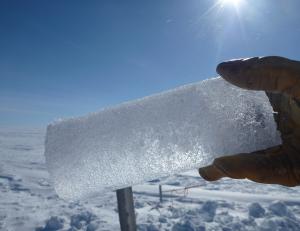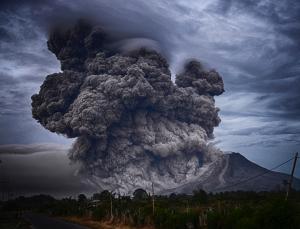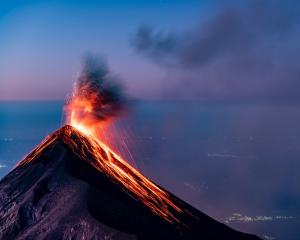Mānoa: El Niño, La Niña multi-year events could become more common
Mānoa: El Niño, La Niña multi-year events could become more ... University of Hawaii


University of Hawaiʻi at Mānoa
Contact:
The atmospheric flow over the tropical Pacific Ocean, known as the “Pacific Walker Circulation,” is undergoing changes that have significant implications for El Niño and La Niña events, according to a study published in Nature by an international team of researchers. These changes may lead to an increase in the frequency of multi-year El Niño and La Niña events, which can worsen the risks associated with droughts, fires, rains, and floods.
“The tropical Pacific has a major influence on global climate,” said Sloan Coats, an assistant professor in the Department of Earth Sciences at the University of Hawaiʻi at Mānoa School of Ocean and Earth Science and Technology. “Understanding how it responds to volcanic eruptions, anthropogenic aerosols, and greenhouse gas emissions is crucial for accurately predicting climate variability and projecting future climate not only in Hawaiʻi but also worldwide.”
The research team utilized data from various sources such as ice cores, trees, lakes, corals, and caves to study the weather and climate of the Pacific Ocean over the past 800 years. This enabled them to compare the Pacific Walker Circulation before and after the rise in greenhouse gases caused by human activities.
The scientists discovered that the time it takes for the Pacific Walker Circulation to transition between El Niño-like and La Niña-like phases has slowed down during the industrial era.
“Our goal was to determine whether greenhouse gases have affected the Pacific Walker Circulation,” said Georgy Falster, the lead author of the study and a research fellow at the ARC (Australian Research Council) Centre of Excellence for Climate Extremes. “We found that while the overall strength hasn’t changed, the year-to-year behavior is different.”
Volcanoes play a role
Volcanic eruptions have the ability to impact global climate, although not all volcanoes have such an effect. Previous research has shown that strong tropical volcanic eruptions tend to result in global cooling.
The researchers’ data analysis and reconstructions of past climate revealed that volcanic eruptions cause a weakening of the Pacific Walker Circulation similar to El Niño.
“This is not a random occurrence. It is a robust finding,” said co-author Bronwen Konecky, an assistant professor at Washington University in St. Louis. “We consistently observe this atmospheric response, whereas others have not observed the same response in ocean temperatures. This could be because the atmospheric response is stronger or easier to detect.”
“Our study provides a long-term perspective on a crucial component of the atmosphere-ocean system in the tropics,” said Coats, whose expertise lies in Common Era paleoclimate. “Understanding how climate change affects the Pacific Walker Circulation will enable communities across the Pacific and beyond to better prepare for the challenges they may face in the coming decades.”
SDGs, Targets, and Indicators Analysis
1. Which SDGs are addressed or connected to the issues highlighted in the article?
- SDG 13: Climate Action
- SDG 15: Life on Land
The article discusses the changing atmospheric flow over the tropical Pacific Ocean and its implications for climate events such as El Niño and La Niña. This relates to SDG 13, which focuses on taking urgent action to combat climate change and its impacts. Additionally, the study used data from various sources, including ice cores, trees, lakes, corals, and caves, to investigate climate variability over the past 800 years. This connects to SDG 15, which aims to protect, restore, and promote sustainable use of terrestrial ecosystems.
2. What specific targets under those SDGs can be identified based on the article’s content?
- SDG 13.1: Strengthen resilience and adaptive capacity to climate-related hazards and natural disasters
- SDG 15.1: By 2020, ensure the conservation, restoration, and sustainable use of terrestrial and inland freshwater ecosystems and their services
The article highlights the importance of understanding how the Pacific Walker Circulation responds to climate change in order to predict climate variability and project future climate. This aligns with SDG 13.1, which focuses on strengthening resilience and adaptive capacity to climate-related hazards. Additionally, the study’s use of data from various sources to investigate climate variability supports SDG 15.1, which aims to ensure the conservation, restoration, and sustainable use of terrestrial ecosystems.
3. Are there any indicators mentioned or implied in the article that can be used to measure progress towards the identified targets?
- Indicator for SDG 13.1: Number of countries with national and local disaster risk reduction strategies
- Indicator for SDG 15.1: Proportion of important sites for terrestrial and freshwater biodiversity that are covered by protected areas
The article does not explicitly mention indicators, but based on the identified targets, potential indicators can be inferred. For SDG 13.1, the number of countries with national and local disaster risk reduction strategies can be used to measure progress in strengthening resilience and adaptive capacity. For SDG 15.1, the proportion of important sites for terrestrial and freshwater biodiversity covered by protected areas can be used to assess the conservation and restoration efforts of ecosystems.
SDGs, Targets, and Indicators Table
| SDGs | Targets | Indicators |
|---|---|---|
| SDG 13: Climate Action | 13.1: Strengthen resilience and adaptive capacity to climate-related hazards and natural disasters | Number of countries with national and local disaster risk reduction strategies |
| SDG 15: Life on Land | 15.1: By 2020, ensure the conservation, restoration, and sustainable use of terrestrial and inland freshwater ecosystems and their services | Proportion of important sites for terrestrial and freshwater biodiversity that are covered by protected areas |
Behold! This splendid article springs forth from the wellspring of knowledge, shaped by a wondrous proprietary AI technology that delved into a vast ocean of data, illuminating the path towards the Sustainable Development Goals. Remember that all rights are reserved by SDG Investors LLC, empowering us to champion progress together.
Source: hawaii.edu

Join us, as fellow seekers of change, on a transformative journey at https://sdgtalks.ai/welcome, where you can become a member and actively contribute to shaping a brighter future.










